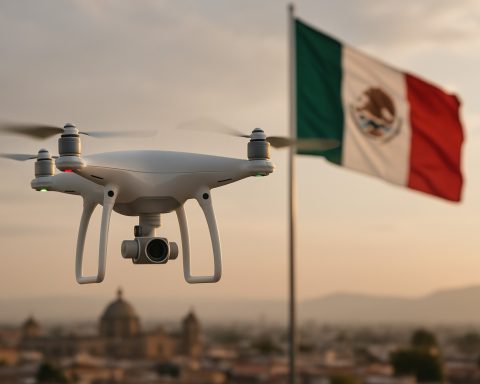- Used EV batteries retain 70–80% capacity after their first life, making them valuable for reuse and second-life applications.
- Repurposed batteries help store renewable energy, support power grids, and reduce waste by prolonging their useful life.
- Battery recycling recovers critical minerals like lithium, cobalt, and nickel, reducing dependence on mining and vulnerable supply chains.
- The recycling industry is expanding rapidly, with major initiatives in the US, Europe, and beyond to turn old batteries into new resources.
- By 2040, recycled materials could supply enough resources to build 15 million EVs annually in Europe, easing both environmental and geopolitical pressures.
- Effective battery recycling is key to a sustainable, decarbonized future for the automotive industry.
Electric vehicles have redrawn the boundaries of automotive innovation, but few realize the electrifying afterlife their batteries might hold. Once thought spent, used EV batteries are now emerging as the secret engines of a resource revolution—one that could upend the global hunt for critical minerals, ease environmental worries, and steer the automotive world toward a more sustainable horizon.
Beneath the surface of every aging battery lies a treasure trove of materials in short global supply. Each lithium-ion unit houses graphite, lithium, cobalt, copper, phosphorous, manganese, and nickel—the very elements currently mined in remote, often politically complicated corners of the globe. The scale is staggering: in 2024 alone, some 17 million battery-electric and hybrid vehicles rolled out onto global roads, a figure set to surge to 20 million in 2025. As electric cars race toward an anticipated 20 percent share of all vehicle sales, the clock ticks ever faster on the need for responsible battery disposal and resource reclamation.
Contrary to popular belief, most used EV batteries still cling to around 70 to 80 percent of their initial storage capacity even after a dozen years on the road—some endure even longer. Rather than relegating them to landfills, clever engineers and forward-thinking companies are spinning these batteries into second lives. The healthiest can be refurbished for use in new vehicles or downsized cars. Batteries with diminished capacity are repurposed to store renewable energy in homes, businesses, and even on power grids. The weakest become candidates for a more dramatic transformation: a shredding process that produces “black mass,” a gritty powder rich in precious minerals. After meticulous separation and chemical refining, the core ingredients—lithium, nickel, cobalt, and graphite—are reborn into new batteries, closing the loop on a once wasteful cycle.
This alchemy serves more than environmental aims. The geopolitical reality of minerals mining is fraught with bottlenecks and ethical concerns. Over half the world’s nickel hails from Indonesia, and most cobalt emerges from the Democratic Republic of Congo, regions burdened by challenging conditions and often-criticized labor practices. Recycling every scrap from used EV batteries undercuts the demand for new mining, shrinking the industry’s environmental footprint and sidestepping fraught supply chains.
Countries and companies are scrambling to catch up. The United States, under sweeping industrial policies like the Inflation Reduction Act, has turbocharged battery recycling initiatives. Firms like Li-Cycle now operate plants in Canada, the US, and Germany, transforming what was once junk into strategic stockpiles. In the United Kingdom, Altilium’s Devon facility is making up for lost time after pandemic delays, while in Europe, industry surveys predict scrap batteries could provide up to a quarter of all cobalt—and a significant slice of lithium, nickel, and manganese—by 2030.
The vision is bold: by 2040, recycled materials could help build up to 15 million new EVs each year across Europe alone. Globally, the International Energy Agency and other leading institutions underscore the necessity of investing in battery recycling to stabilize supply chains, support environmental justice, and control costs. Skills shortages and upfront expenses remain hurdles, but with the right policies and market incentives, the industry appears poised for a dramatic expansion.
The key lesson is clear: Used EV batteries aren’t just a waste problem—they are an opportunity. By breathing new purpose into these silent giants, industries can conserve finite resources, reduce environmental damage, and take charge of their own decarbonized future. As the world shifts gears toward electrification, the real power might just be what’s left behind.
For deeper insights and the latest developments in energy, visit energy.gov.
Electric Vehicle Battery Recycling: The Untold Gold Rush Shaping the Future of Clean Energy
Electric vehicle (EV) batteries are becoming more than just the beating heart of sustainable transportation—they’re fast emerging as the key to a circular, resilient economy. While the basic facts about battery recycling are well known, a deeper dive reveals a world of opportunity and complexity, where technology, policy, and market forces intersect. Here’s everything you didn’t know about this critical sector, plus tips, how-tos, and market insights you can use today.
—
EV Battery Second Life: How It Works & What It Means for the Grid
After powering EVs for up to 15 years, lithium-ion batteries retain substantial energy storage potential. Here are the main afterlife options:
1. Vehicle Refurbishment
Highest quality used batteries can be tested, reconditioned, and installed in new or used electric vehicles—especially smaller or less demanding models. Some automotive manufacturers, such as Nissan, offer refurbished batteries for existing owners at lower prices (BloombergNEF, 2024).
2. Stationary Storage Solutions
With 70–80% capacity, most retired EV batteries are ideal for home solar backup, grid-scale energy storage, and load balancing. Volkswagen’s Smart Energy Storage Systems and Tesla’s Powerwall are early examples of this trend.
How-To: Repurposing EV Batteries for Home Use
– Contact local energy companies for battery buyback or repurposing programs.
– Work with certified installers to ensure batteries meet safety standards and are compatible with your home solar or backup system.
– Follow official disposal or handover laws—improper handling can be dangerous due to potential thermal runaway.
3. Black Mass Recycling & Resource Recovery
Even at end-of-life, batteries can be shredded and processed to extract a “black mass” powder rich in valuable minerals. Hydrometallurgical and pyrometallurgical processes then recover lithium, cobalt, nickel, and graphite. These secondary raw materials reduce dependence on primary mining.
—
Key Facts and Industry Trends You Need to Know
– Recycling Capacity & Forecasts: According to International Energy Agency, by 2030, recycled materials could supply up to 15% of lithium, 25% of cobalt, and 6% of nickel needed for new batteries globally.
– Economic Impact: BloombergNEF estimates lithium-ion battery recycling could become a $13 billion market by 2030.
– Policy Push: The European Union’s Battery Directive mandates that by 2027, 90% of cobalt and 35% of lithium must be recovered from all spent batteries.
– Market Leaders: Companies like LG Energy Solution, Northvolt, and Redwood Materials have invested billions in vertically integrated recycling operations.
– Supply Chain Security: Recycling could reduce Europe’s cobalt imports from the Democratic Republic of Congo by a quarter in five years, improving ethical sourcing.
—
Environmental, Ethical, and Security Considerations
– Environmental Upsides: Closed-loop recycling slashes energy use and CO2 emissions compared to raw material extraction—by up to 80% for some minerals (Circular Energy Storage, 2023).
– Ethical Sourcing: Recycling reduces the need for new mining, which is often linked to child labor, environmental degradation, and geopolitical risk.
– Security & Sustainability: Localizing raw material supplies via recycling insulates national industries from global shocks and embargos.
– Limitations: Not all battery chemistries are equally recyclable—lithium iron phosphate (LFP) cells, common in China, have lower value at end-of-life than nickel-rich types.
—
Pressing Questions Answered
Are recycled EV batteries safe?
Reputable recycling and repurposing programs must comply with strict safety protocols. In the EU and US, certification schemes and codes like UL 1973 govern stationary battery retirements.
How long can second-life batteries be used in storage?
Most last 5–10 years in stationary settings before final recycling.
How do prices of recycled battery minerals compare to mined ones?
Recycled lithium and cobalt can be 20–30% cheaper and carry lower carbon footprints, but prices fluctuate based on supply-demand and processing advances.
Are there any security concerns?
Securing the collection of used batteries is paramount—improper handling can risk fires, and organized crime has been linked to battery theft in some regions.
Can EV battery recycling truly meet future demand?
While exciting, recycled supplies will only partially cover skyrocketing demand. Innovations and continued mining will be required—but recycling will significantly reduce stress on ecosystems and human communities.
—
Pros & Cons Overview
Pros
– Reduces landfill waste and environmental contamination
– Cuts emissions and water usage compared to mining
– Boosts supply chain resiliency and local industry
– Drives down long-term battery costs
Cons
– Technical and regulatory hurdles in scaling up
– High initial investments for recycling plants
– Current collection rates are low—requires consumer buy-in
– Not all batteries (e.g., LFP) are equally valuable to recycle
—
Actionable Recommendations & Life Hacks
– If you own an EV, ask your dealer about certified second-life or recycling programs—don’t let your battery end up as e-waste.
– Homeowners installing solar: in some markets, you can save money by opting for reconditioned EV battery storage.
– Policymakers and startups: there is an urgent need for take-back schemes and public education to increase collection and safe handling.
– Watch for new government incentives on EV and battery recycling, especially in the US, EU, and China—they can lower costs on both new and used battery systems.
For the latest on clean energy breakthroughs and battery innovation, explore resources at the US Department of Energy and IEA.
—
Conclusion: The Charge Forward
EV battery recycling is no longer just a noble idea; it is an economic, environmental, and ethical imperative. As electric vehicles become mainstream, the race is on for nations and companies to secure, recycle, and reuse this new “urban mine.” Start asking about battery end-of-life solutions today—every informed choice helps power the future of clean energy.









